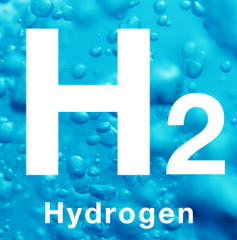
College of Engineering Unit:
With fossil fuels showing their age, and the greenhouse gasses produced during their consumption posing a significant danger to the future of human civilization, alternative fuel sources are being pursued. Hydrogen stands out as one of the most promising energy sources due to its high energy density, efficiency, and non-toxicity. However, the production of hydrogen can be costly in both a financial and environmental sense. There are currently two primary methods of hydrogen production. The first is via a process called steam methane reforming (SMR) which consumes fossil fuels to extract the hydrogen from methane, which emits greenhouse gasses. The second is conventional alkaline water electrolysis.
A promising method of hydrogen production stems from harnessing nuclear energy, also known as Pink Hydrogen production. Nuclear reactors have the unique ability to produce enormous amounts of heat with no carbon emissions. Thus, nuclear reactors are a premier method of clean hydrogen production via a process called high-temperature steam electrolysis (HTSE). Estimates show that the production of hydrogen via HTSE can yield efficiencies greater than conventional alkaline water electrolysis. The largest hurdle is the temperature barrier for the aforementioned high-temperature steam electrolysis, surpassing the highest end of operating temperatures of boiling water and pressurized water reactors.
The goal for this project is to attempt to design a facility that will produce electricity and heat to aid in high-temperature steam electrolysis creating 170 metric tons of hydrogen per day versus just electricity generation and compare such a facility with one solely producing Hydrogen. With this in mind, it is also essential to realize the current generation of heat exchangers' inability to transfer necessary heat to such a vast quantity of water. Thus, a large focus is also placed on Printed Circuit Heat Exchangers, and their promising abilities to utilize the heat being generated from Nuclear Power.